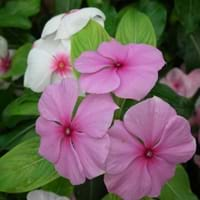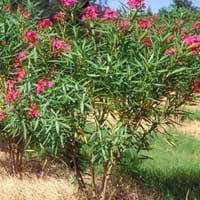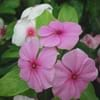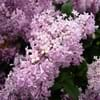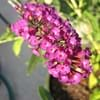Life Span
Perennial
Perennial
Type
Flowering Plants, Shrubs
Flowering Plants, Shrub
Origin
Madagascar
Southwest Asia
Types
Purple vinca, Vinca, cherry red, strawberry color
Calypso, Petite Salmon, Petite Pink
Number of Varieties
Not Available
Habitat
Subtropical climates, Tropical regions
dry rocky watercourses, Riverbanks
USDA Hardiness Zone
4-9
9-11
AHS Heat Zone
12-1
Not Available
Sunset Zone
A1, A2, A3, H1, H2, 1a, 1b, 2a, 2b, 3a, 3b, 4, 5, 6, 7, 8, 9, 10, 11, 12, 13, 14, 15, 16, 17, 18, 19, 20, 21, 22, 23, 24
Not Available
Habit
Clump-Forming
Bushy, Evergreen
Flower Color
Magenta, Pink, Rose
Cream, Creamy Yellow, Pink, Purple, Red, White
Flower Color Modifier
Not Available
Bicolor
Fruit Color
Not Available
Non Fruiting Plant
Leaf Color in Spring
Dark Green
Dark Green
Leaf Color in Summer
Dark Green
Dark Green
Leaf Color in Fall
Dark Green
Dark Green
Leaf Color in Winter
Dark Green
Gray Green
Leaf Shape
Oval
Long linear and narrow
Plant Season
Fall, Spring, Summer, Winter
Fall, Spring
Sunlight
Partial shade
Full Sun, Partial shade
Type of Soil
Loamy, Sandy, Well drained
Marshy ground, Well drained
The pH of Soil
Neutral, Slightly Alkaline
Neutral, Slightly Alkaline
Soil Drainage
Well drained
Well drained
Bloom Time
Fall, Spring, Summer
Summer
Tolerances
Drought, Pollution, Salt
Drought
Where to Plant?
Container, Ground, Pot
Ground, Pot
How to Plant?
Seedlings, Stem Planting, Transplanting
Layering, Seedlings, Stem Planting
Plant Maintenance
Medium
Low
Watering Requirements
Does not require lot of watering, Medium
Water less during winter, Water more in summer
In Summer
Lots of watering
Lots of watering
In Spring
Moderate
Moderate
In Winter
Average Water
Average Water
Soil pH
Neutral, Slightly Alkaline
Neutral, Slightly Alkaline
Soil Type
Loamy, Sandy, Well drained
Marshy ground, Well drained
Soil Drainage Capacity
Well drained
Well drained
Sun Exposure
Partial shade
Full Sun, Partial shade
Pruning
Prune ocassionally
Prune in the late winter or spring, Remove shoots
Fertilizers
All-Purpose Liquid Fertilizer
All-Purpose Liquid Fertilizer, fertilize every 2-3 weeks while growing, Fertilize in early spring, Potassium
Pests and Diseases
Botrytis Blight, Canker, Crown rot, Pythium rot, Root rot
Leaf spot, Mealybugs, Red blotch, Red spider mite, Scale, Scale insects
Plant Tolerance
Drought
Drought
Flower Petal Number
Single
Single
Showy Foliage
Yes
Unknown
Foliage Texture
Medium
Medium
Foliage Sheen
Glossy
Matte
Attracts
Butterflies
Mealybugs, Not Available
Allergy
Intestinal gas, Nausea, Vomiting
Phytodermatitis, Rash, Toxic
Aesthetic Uses
Beautification, Showy Purposes
Cottage Garden, Showy Purposes, Used in parkland
Beauty Benefits
Not Available
Not Available
Environmental Uses
Air purification
Air purification
Medicinal Uses
Chest pain, High blood pressure, Inflammation, Sore throat, Tooth ache, Wounds
Asthma, Cancer, Cardiotonic, Diabetes, epilepsy, Scabies
Part of Plant Used
Whole plant
Flowers, Leaves
Other Uses
Decoration Purposes, Showy Purposes, Used as Ornamental plant
Used as Ornamental plant
Used As Indoor Plant
Yes
No
Used As Outdoor Plant
Yes
Yes
Garden Design
Bedding Plant, Container, Edging
Not Available
Botanical Name
Catharanthus roseus
Nerium
Common Name
Madagascar periwinkle or rosy periwinkle
Oleander, Nerium Oleander
In Hindi
Periwinkle
ओलियंडर
In German
Immergrün
Oleander
In French
Pervenche
laurier-rose
In Greek
μυρτιά
Πικροδάφνη
In Portuguese
Mirta
oleandro
In Polish
Barwinek
Oleander
In Latin
Periwinkle
Cleander
Phylum
Mollusca
Magnoliophyta
Class
Gastropoda
Magnoliopsida
Order
Geraniales
Gentianales
Family
Apocynaceae
Apocynaceae
Genus
Catharanthus
Nerium
Clade
Not Available
Angiosperms, Asterids, Eudicots
Tribe
Not Available
Wrightieae
Subfamily
Not Available
Apocynoideae, Hippocastanoideae
Number of Species
Not Available
Season and Care of Periwinkle and Oleander
Season and care of Periwinkle and Oleander is important to know. While considering everything about Periwinkle and Oleander Care, growing season is an essential factor. Periwinkle season is Fall, Spring, Summer and Winter and Oleander season is Fall, Spring, Summer and Winter. The type of soil for Periwinkle is Loamy, Sandy, Well drained and for Oleander is Marshy ground, Well drained while the PH of soil for Periwinkle is Neutral, Slightly Alkaline and for Oleander is Neutral, Slightly Alkaline.
Periwinkle and Oleander Physical Information
Periwinkle and Oleander physical information is very important for comparison. Periwinkle height is 1.97 cm and width 2.96 cm whereas Oleander height is 300.00 cm and width 350.00 cm. The color specification of Periwinkle and Oleander are as follows:
Periwinkle flower color: Magenta, Pink and Rose
Periwinkle leaf color: Dark Green
Oleander flower color: Cream, Creamy Yellow, Pink, Purple, Red and White
- Oleander leaf color: Dark Green
Care of Periwinkle and Oleander
Care of Periwinkle and Oleander include pruning, fertilizers, watering etc. Periwinkle pruning is done Prune ocassionally and Oleander pruning is done Prune in the late winter or spring and Remove shoots. In summer Periwinkle needs Lots of watering and in winter, it needs Average Water. Whereas, in summer Oleander needs Lots of watering and in winter, it needs Average Water.
